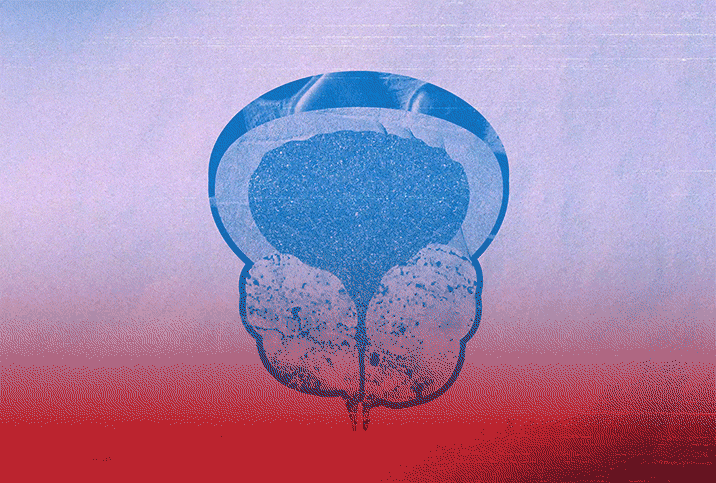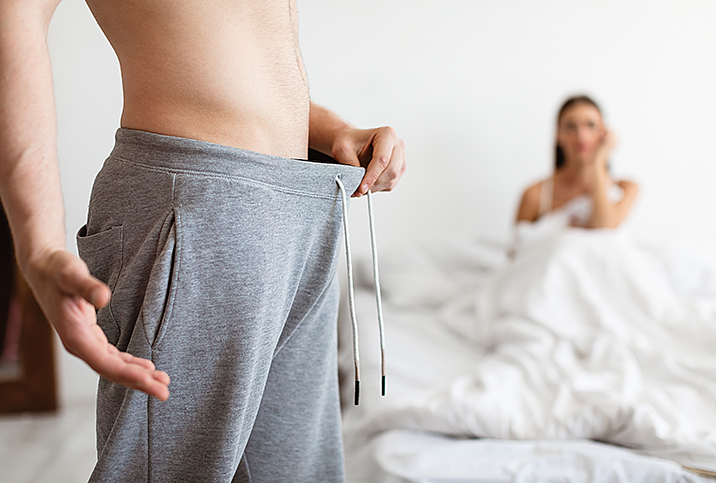LUTS Can Put the 'D' in ED

Lower urinary tract symptoms, or LUTS, are common in all genders and sometimes share some of the same external-facing issues: overactive bladder, frequent nighttime urination, incontinence and many others.
In men, the issues are thought to primarily link to a couple of possible places: an enlarged prostate, also known as benign prostatic hyperplasia (BPH), or vascular problems. Beyond the frustrating urinary symptoms, untreated LUTS can lead to erectile problems, as well.
"LUTS have been linked to erectile dysfunction and may be related to shared molecular mechanisms," said Uzoma Anele, M.D., a urologist with the University of Louisville Health in Kentucky.
Men with diabetes or vascular issues are at higher risk for developing LUTS. Men older than 40 also face a higher risk, primarily because of more instances of BPH in the age group. Excessive alcohol use and general tobacco use can increase the potential for LUTS. Obesity can also contribute to the development of symptoms.
Start with medication and lifestyle changes
Diagnosing LUTS begins with a full look at a patient's health, according to Darshan Patel, M.D., an assistant professor of urology at the University of California San Diego Health.
"If someone is coming in with bothersome LUTS, I'll try to find out more about their obstructive or irritative symptoms, assess their sexual health and baseline ED, and that will help when we think about treatment options," he said.
Anele noted that due to the therapeutic results of drugs such as tadalafil (Cialis) in small doses of 5 milligrams, LUTS could potentially be treatable by repairing specific pathways that are used by the bladder as well as the penis. The exact mechanism behind this is still largely unknown, but one school of thought is the active ingredient in the drug works to relax smooth muscle cells in the urogenital tract, leading to an ease of LUTS occurrences.
Simple lifestyle changes, such as improvements in diet and exercise, may help curb LUTS.
Patel noted that certain alpha blockers, a common blood pressure medication that helps control prostate enlargement, can also cause ejaculatory dysfunction such as retrograde ejaculation. The alpha blocker alfuzosin may have a less negative impact on ejaculatory function than other alpha blockers, according to a 2008 study published in Actas Urológicas Españolas.
Anele added that one of the other early steps is to help patients implement lifestyle changes.
"LUTS and ED are both connected to cardiovascular disease and diabetes in that they are worsened or have higher prevalence in patients with poor control of these conditions," he said.
Simple lifestyle changes, such as improvements in diet and exercise, may help curb LUTS, with age and general body condition playing important roles in the success of that approach.
Procedures are the next step
Patel explained that treatments for LUTS have come a long way—he explores two minimally invasive options with his patients.
One is a small implant that physically holds back the enlarged prostate tissue, and the second is water vapor therapy, in which heated steam is administered via a small needle through the urethra to help naturally shrink the enlarged area of the prostate. Both procedures are performed with light sedation in outpatient settings, and patients can notice symptomatic improvement almost immediately, Patel said.
"Neither of these have been shown to affect erectile or ejaculatory function," he added.
Patients who don't respond to these treatments or who have significantly enlarged prostates may be candidates for full prostate removal, which comes with its own potential sexual side effects.
Men can't avoid a certain amount of natural biology when they face the potential onset of LUTS. But some factors are within their control, and they can help ease the prevalence of symptoms along with possible sexual dysfunctions.
"Addressing uncontrolled cardiovascular disease, diabetes, obesity, etc., through diet and exercise is usually one of the first steps in managing LUTS and ED," Anele said.


















